Canon 24-105 vs Sigma 24-70 2.8 HSM vs Tamron 28-75 2.8
Sigma 24-70 2.8 HSM, Canon 24-105 IS USM, Tamron 28-75 2.8. Click here to enlarge.
The standard zooms are the most popular lenses for every manufacturers; there are dozens of standard zoom, and nearly every photographer owns one of these lenses. In this test, I have compared the best standard zooms of every manufactuter (in Canon EF mount...in future I'm going to test also Sony and Nikon). I own the super versatile Canon 24-105 IS, and I have compared it with the new Sigma 24-70 2.8 HSM and with the Tamron 28-75 f/2.8, one of the cheapest f/2.8 zooms on the market.
Specifications
����| � | � �Canon 24-105 f/4 L IS USM | � �Sigma 24-70 2.8 | � � Tamron 28-75 2.8 |
�
| �Focal length | � �24-105 mm | � �24-70 mm | � �28-75,mm |
�
| �Construction | � �18 elements/13 groups | � �14 elements/12 groups | � �14 elements/14 groups |
�
| �Macro ratio | � �0.23x (1:4.3) | � �0.18x (1:5.3) | � �0.25x (1:3.9) |
�
| �Max Aperture | � �f/4 | � �f/2.8 | � �f/2.8 |
�
| �Stabilization | � �Yes | � �No | � �No |
�
| �Autofocus | � �Ultrasonic motor | � �Ultrasonic motor | � �Lens motor |
�
| �Closest Focus | � �0.45 meters | � �0.38 meters | � �0.33 meters |
�
| �Dimensions | � �83 x 107 mm | � �88 x 94 mm | � �73 x 92 mm |
�
| �Weight | � �670 g | � �790 g | � �510 g |
�
| �Weather sealing | � �Yes | � �No | � �No |
�
| �Price | � �$ 1000 | � �$ 900 | � �$ 400 € |
�
| �Announced | � �2005 | � �2008 | � �2003� |
�
Built quality, stabilization and autofocus
Both the Canon and the Sigma have excellent built quality: they feels solid, professional; the Canon has even weather sealing. In comparison, the Tamron feels a bit "cheap", it is much lighter than the Sigma and it has not the same professional look...on the other hand, the Tamron costs $ 400 while the Sigma is $ 900. All lenses have large focus ring and zoom ring; they extend considerably during zooming.
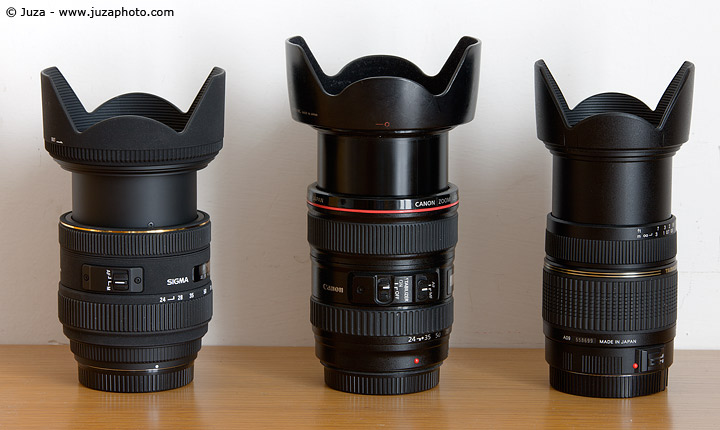
Sigma 24-70 2.8 HSM, Canon 24-105 IS USM, Tamron 28-75 2.8, extended and with hood. Click here to enlarge.
The Canon and the Sigma have fast and silent ultrasonic autofocus, with full time manual focus; the Tamron instead has a traditional AF motor, that is quite noisy and not as fast as the AF motor of the other two lenses. The Canon has a big advantage: image stabilization. I own the Canon from some years and I have appreciated a lot the stabilization, sometimes it really makes the difference between a sharp photo and a blurred one. You have to evaluate if for you it is more important the f/2.8 aperture, or if you prefer the advantage of IS with the f/4 aperture of the 24-105. Personally, I rarely use standard zooms wide open, so I don't mind the difference between f/2.8 and f/4 on such lenses, and I prefer to have IS.
Image quality comparison
I have tested the lenses on my Canon 1DsIII (21 megapixel, FF). The lenses was mounted on tripod; I have used mirror lock up and self timer. The following images are 100% crop from the unprocessed RAW file. (note: c24 is Canon 24-105 IS, s24 is Sigma 24-70 HSM and t28 is Tamron 28-75).
24/28mm, center:
����| � | � �wide open | � �f/8 |
�
| �c24 | � � | � � |
�
| �s24 | � � | � � |
�
| �t28 | � � | � � | �
�
24/28mm, corner:
����| � | � �wide open | � �f/8 |
�
| �c24 | � � | � � |
�
| �s24 | � � | � � |
�
| �t28 | � � | � � | �
�
In the center, all three lenses give excellent image quality, both wide open and at f/8. In the corners, instead, they are quite soft; the Canon and the Tamron are the best (even though you have to stop down to f/8 to get a relatively good corner sharpness), while the Sigma has soft corners, even stopped down.
40mm, center:
����| � | � �wide open | � �f/8 |
�
| �c24 | � � | � � |
�
| �s24 | � � | � � |
�
| �t28 | � � | � � | �
�
40mm, corner:
����| � | � �wide open | � �f/8 |
�
| �c24 | � � | � � |
�
| �s24 | � � | � � |
�
| �t28 | � � | � � | �
�
In the center, all lenses give excellent image quality at f/8; the Canon 24-105 is slightly better wide open. In the corners, instead, the Tamron is the sharpest of the three both wide open and at f/8, while Canon and Sigma show softer corners.
70mm, center:
����| � | � �wide open | � �f/8 |
�
| �c24 | � � | � � |
�
| �s24 | � � | � � |
�
| �t28 | � � | � � | �
�
70mm, corner:
����| � | � �wide open | � �f/8 |
�
| �c24 | � � | � � |
�
| �s24 | � �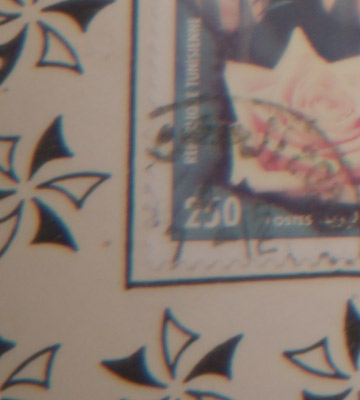 | � � |
�
| �t28 | � � | � � | �
�
In the center, all lenses give excellent image quality both wide open and at f/8; the Tamron is the only one that shows a little less contrast wide open. In the corners, the results are very similar for all three lenses; in this case the Tamron is slightly sharper than the other three, but it is a small difference.
Flare
����| � | � �wide open | � �f/16 |
�
| �c24 | � �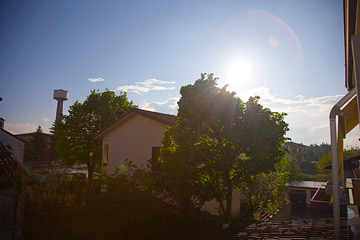 | � �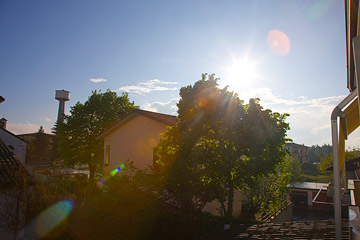 |
�
| �s24 | � �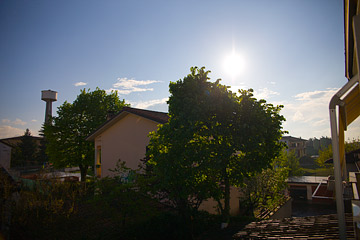 | � �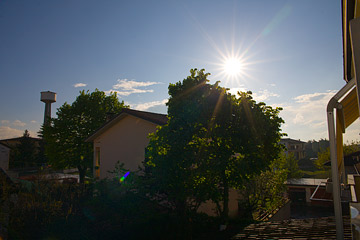 |
�
| �t28 | � �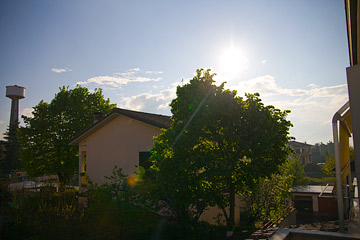 | � �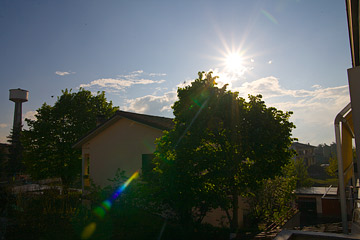 | �
�
The flare is an important thing that you have to consider when you chose a lens: it is almost impossible to correct flare during post-processing. Flare is the Achille's heel of Canon 24-105: it is bad wide open, and unusable at f/16, when there are strong light sources into the frame. The Tamron is not as bad as the Canon, but still far from great at small apetures. The Sigma, instead, is impressive: it has almost no flare wide open, and even at f/16 it is still pretty good.
Vignetting and distortion
����| �Canon 24-105 | � �Sigma 24-70 | � �Tamron 28-75 |
�
� | � � | � � | �
�
����| �Canon 24-105 | � �Sigma 24-70 | � �Tamron 28-75 |
�
�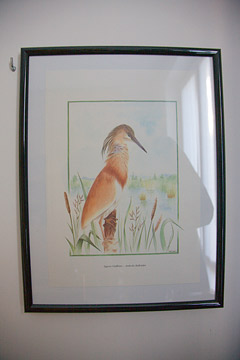 | � � | � �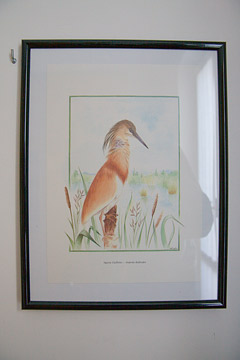 | �
�
I don't care much about distortion and vignetting because you can correct them easily with Photoshop, anyway, this is the result: the Sigma and the Tamron are very similar (quite good), while the Canon shows more distortion and vignetting.
The difference in angle of view
Even though all three lenses can be considered "standard zooms", they cover different ranges. The Tamrom has less wide-angle than the Canon and Sigma, and the Canon has more tele than the other two lenses.
This is the difference between 24mm and 28mm:
And this is the difference between 70, 75 and 105mm:
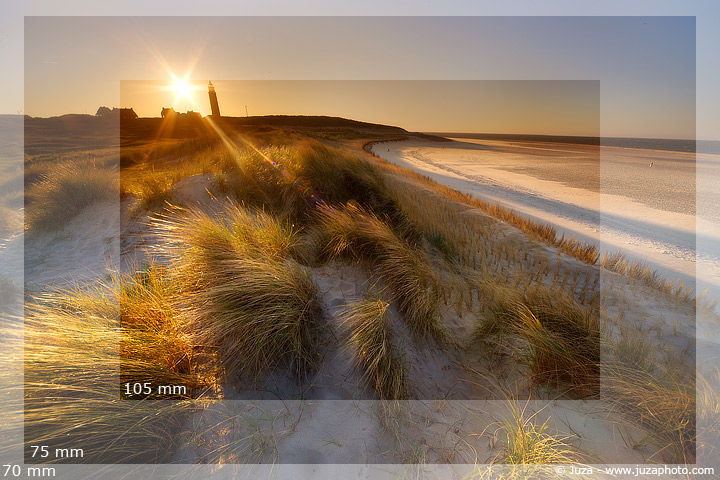
Conclusions
All the lenses are pretty good, but each one has its weaknesses. The Canon 24-105 is very sharp; it has a very useful zoom range, professional built quality, fast autofocus and image stabilization - overall, it is my preferred standard zoom, but it has an huge problem: flare. If you take often photos with the sun or other strong light sources into the frame, I don't recommend the Canon 24-105: at f/16, it is almost unusable with strong light sources; otherwise it is an excellent choice.
The Sigma is almost as expensive as the Canon; the built quality is great, and the HSM AF motor is as good as the Canon AF. In terms of image quality, it is on par with the Canon in the center, but it is softer in the edges, in particolar at 24mm. A great advantage of the Sigma is the impressively low flare: even with the sun directly into the frame, it showed almost no flare. If you take often photos that include the sun, the Sigma 24-70 is a better choice than the Canon, if you don't mind the soft corners at 24mm (on FF cameras).
The Tamron has been a pleasant surprise. This lens is really cheap, it costs less than half the Sigma and the Canon, but it has great image quality: it is as sharp as the Canon, and sometimes it is even better. It lacks of IS and the AF is not as good as Canon and Sigma AF, but for its price it is truly a bargain; I recommend this lens for those who have a limited budget and want an sharp f/2.8 standard zoom.

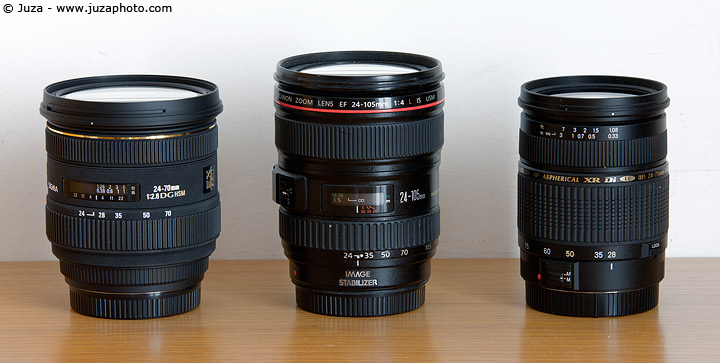

















































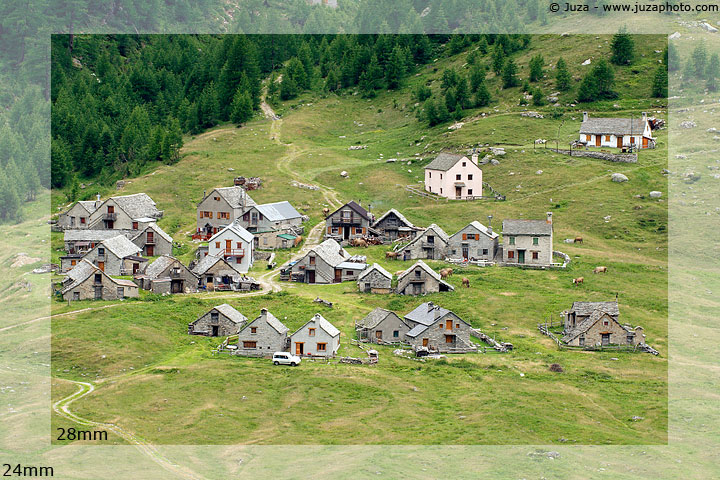

 JuzaPhoto contains affiliate links from Amazon and Ebay and JuzaPhoto earn a commission in case of purchase through affiliate links.
JuzaPhoto contains affiliate links from Amazon and Ebay and JuzaPhoto earn a commission in case of purchase through affiliate links.